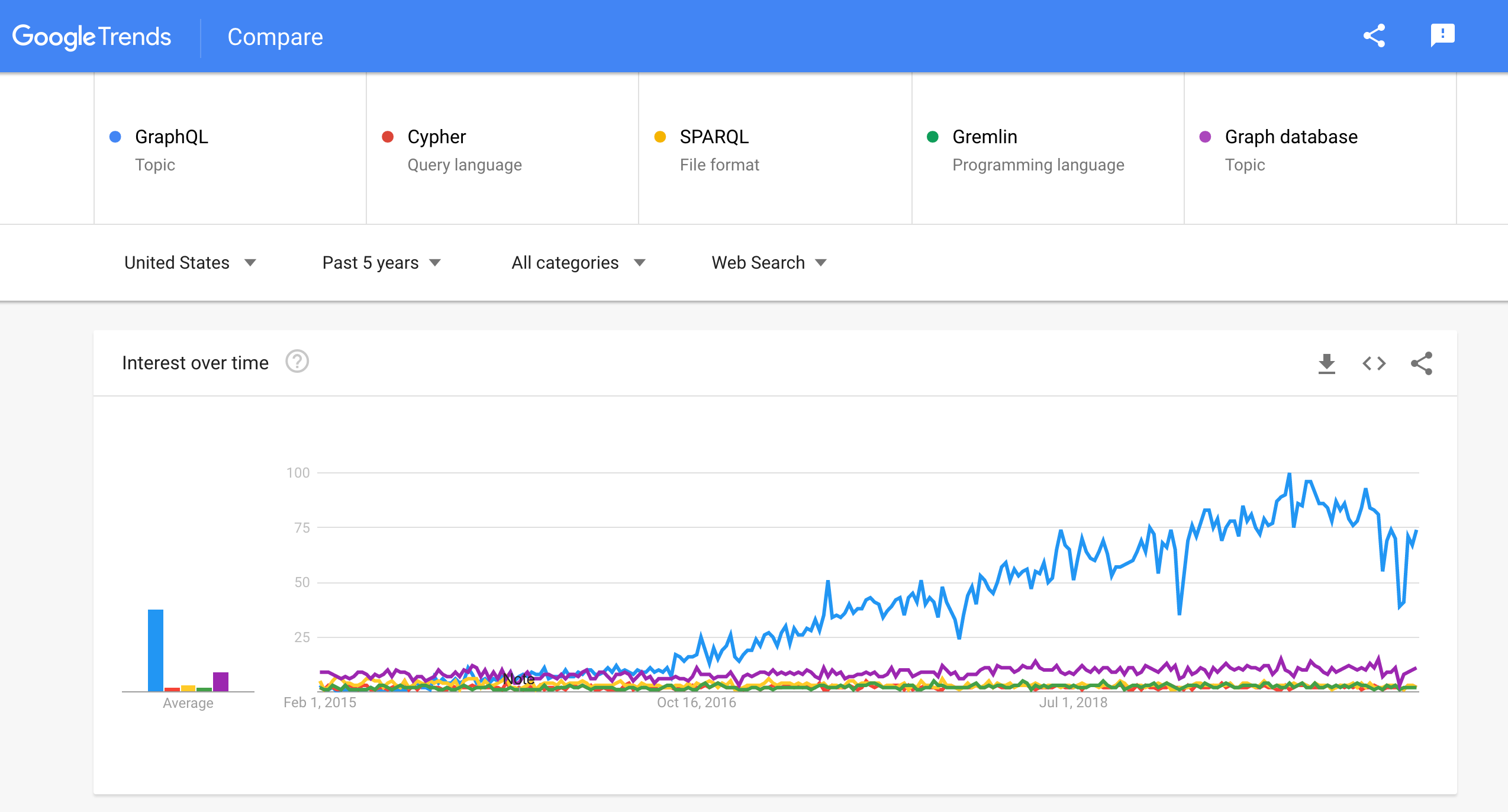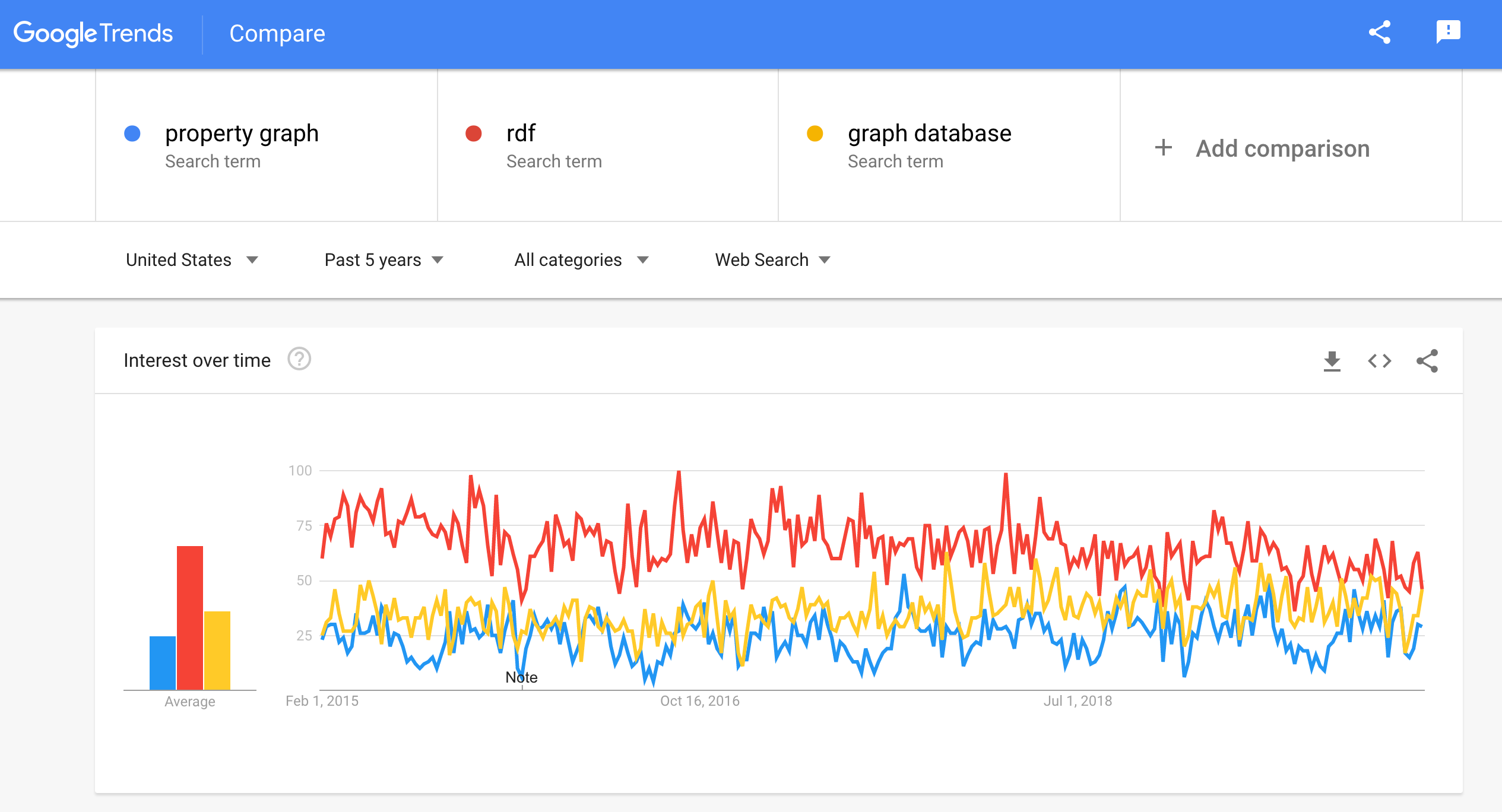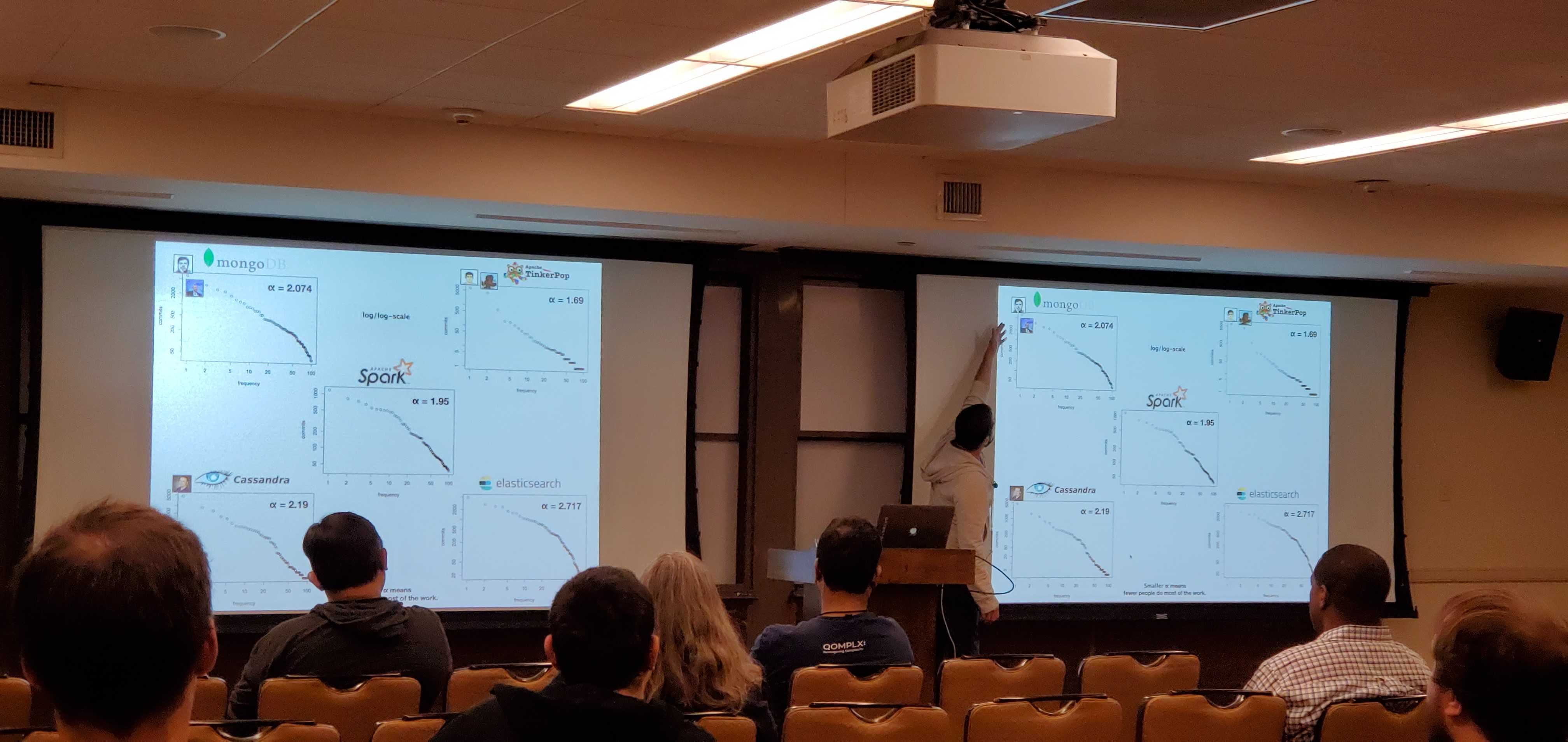1. GraphQL and Graph Technology are both here and simultaneously causing confusion.
GraphQL is one of the most requested query languages. Simultaneously and in an entirely separate lane, Graph Technology solves a set of problems more efficiently than RDBMS.
When these topics collide, and they always do from the perspective of the graph industry, they create confusion because they both reference the concept of “graph”.
GraphQL is not a graph database query language. However, it solves a common problem that the graph databases have: query language ease-of-use. GraphQL is commonly referenced when in conversation with graph databases because developers are pulling the graph industry to create query languages that are easier to use.
While the above information describes my anecdotal experience, consider the trend of Google Search history for these topics, captured below. There are links to live dashboards underneath each image.

Live Dashboard for Trends in Graph Query Languages is Accessible here. *Thank you Juan Sequeda for your quick turn around to ensure we were accurately viewing SparQL in this view.

Live Dashboard for Trends in Graph Database Search is Accessible here.
The metrics above, about the trends over the past 5 years for comparing the global community’s search history on Google, speak loudly:
Give us easy to use query languages that solve graph problems.
2. “The OSS ‘Summer of Love from 2012’ is over” - Marko Rodriguez
At Data Day Texas, both Jonathan Ellis and Marko Rodriguez spoke of the issues that have evolved for the OSS community of the past decade. Ellis, CTO of DataStax, said:

“If you are building open source software, you need to build products and services around it if you want to run a business." -Jonathan Ellis of DataStax during @DataDayTexas”
After Ellis’ Keynote, Rodriguez took the stage and detailed the difficult situation the OSS community is in.

Rodriguez plotted the top contributions on GitHub for the most popular open source projects and painted a dire future for supporting OSS. Our most beloved OSS projects are built on the shoulders of few, who are doing the work for free.
Together, both Ellis and Rodriguez advised that the future of our industry will be moving towards creating free access to new and innovative technologies.
And, I couldn’t agree with them more.
More often than not, I consume OS software rather than inspecting its source. Companies like Snowflake have proven that a free access tier is a profitable business model, an opinion which Ellis and I share.
3. The Future of Graph Hinges on Understanding Production Usage and Value
The main theme of the Friday night Graph panel centered on the challenges ahead of us and the expert’s opinions on how we can get there.
I am still thinking about a few excellent points made by my fellow panelists.
“SMEs are vital for using analytics in production”. - Amy Hodler
Amy told a story with which we are all too familiar. She was advising a customer/developer who succeeded in completing page rank over his graph data, and was ready to move into production.
“Hold on there; what does that mean to your data?” was Hodler’s response.
Those moments describe the state of the graph industry.
We both need to move projects into production, but we need to be more tactful in their applications. The process requires an industry SME who can appropriately apply the meaning of the graph query or algorithm results to the data so that they provide useful details to a production application.
As an example, consider what Josh Shinavier is helping build at Uber.
During the panel discussion, he described their knowledge graph implementation that tracks metadata across over 200,000 datasets with the Apache Tinkerpop™ Gremlin query language. (Is anyone else now cognizant of having to close their mouth at the realization that he said 200,000 datasets at Uber?)
The conversation and details about Uber’s deep usage of graph technology tied really well into Juan Sequeda’s perspective and mission on how we can drive innovation for the graph industry. As lead and advocated by Juan, innovation and progress for the graph industry will come from bridging the gap between academia and industry along with property and semantic graphs.
Only from understanding where we have failed historically can we prevent ourselves from recreating the wheel, a sentiment which I applaud Sequeda for passionately driving and appreciate being able to participate in.
Bonus Takeaway:
Josh Perryman knows how to make panels
Who knew that “Whose Line is it Anyways” paired with a panel of experts could be so brilliantly done. We loved Josh’s buzzer for “marketing muppetry” because it forced all of us to be cognizant of sharing truths and not buzzwords.
I hope more people follow his lead.
I, at least, will sign up to be on any of his panels in the future. Thank you Josh!
Lastly and far from least, A special thanks goes to Lynn Bender for putting together such a great event. It was one of the best and we can’t wait for the 2021 event.








